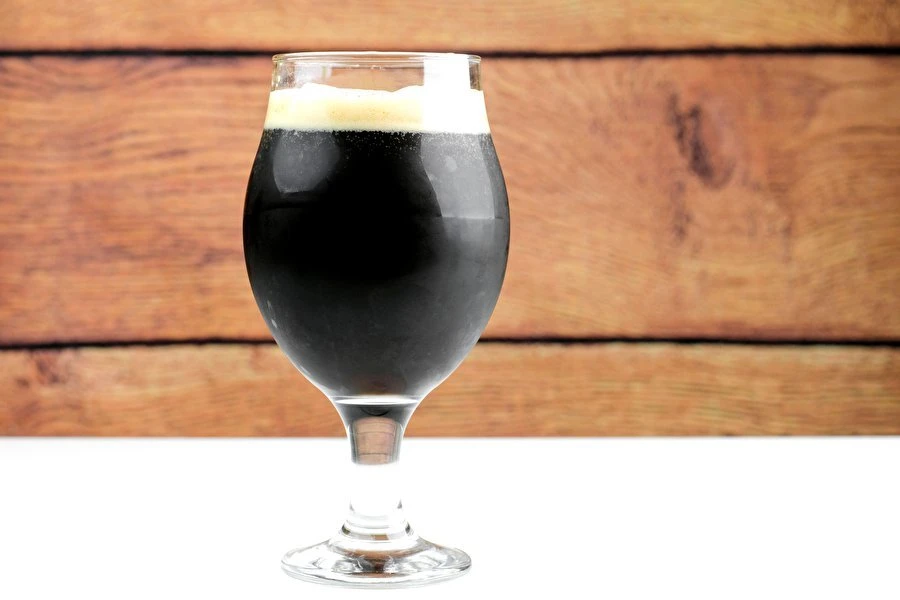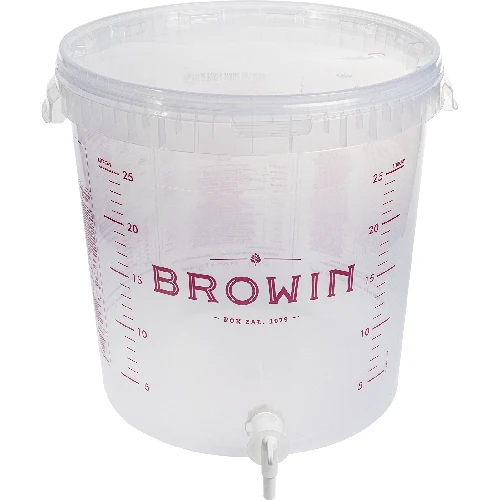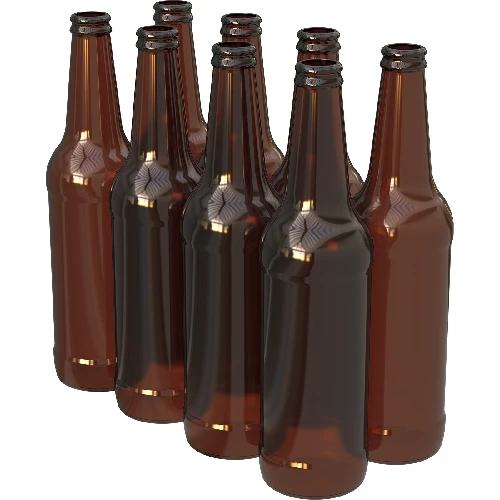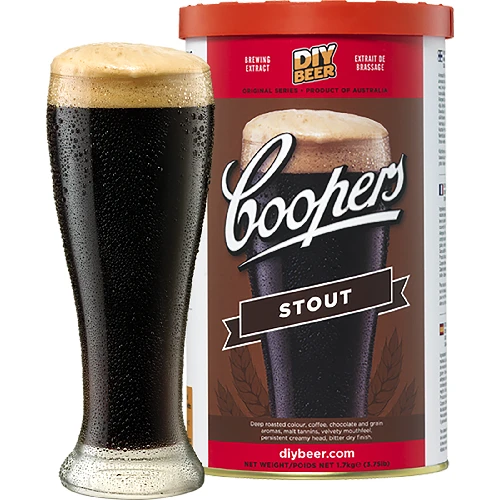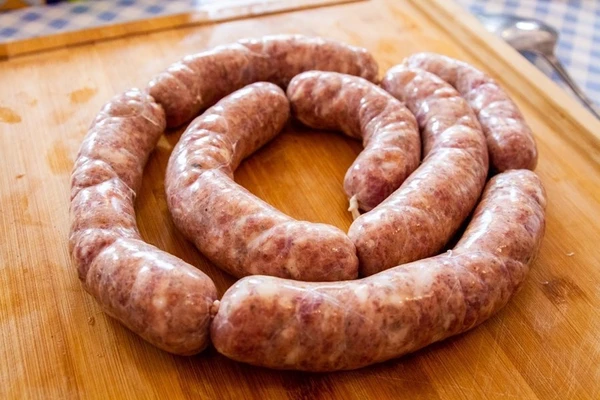Stout is derived from English porter. Stout was originally a stronger version of porter. Nowadays, stout no longer means stronger beer and comes in many different varieties, such as dry stout, milk stout, oatmeal stout, Russian Imperial Stout or coffee stout. What all stouts have in common is a dark, often even black colour, resulting from the use of roasted malts, and the coffee and chocolate flavours and aromas derived from them. The following recipe is a great idea to enhance the basic concentrate. Coopers beers are the perfect base for experimentation, which is why we encourage you to let your imagination run wild!
Preparation:
Important: disinfect thoroughly the equipment used for making the beer. Use potassium metabisulphite for this purpose, for example.
1. Remove the yeast from under the lid. Dissolve the content of the cans (or the one with the concentrate and glucose) in about 2-3 litres of warm water, stirring constantly.
2. Dissolve the yeast - pour the yeast into a glass of water with temperature of about 25°C, stir gently and leave everything for 20-30 minutes.
3. Pour the Coopers extract and dissolved concentrate (or concentrate and glucose) into a fermentation container and top it up with water to 20 L. The temperature of the whole setup should be about 25°C.
4. Add dissolved yeast.
5. Close the fermentation container and install an airlock (half-filled with water). We also recommend measuring the extract content (°Blg).
6. Start fermentation. Conduct it for 7-10 days until reaching 0-2°Blg.
7. On the fourth day, add 500 mL of coffee brew to the batch – filter it 3 times to obtain a clear extract.
8. After fermentation, pour the beer into bottles. Add 4 g of glucose to each bottle (0.5 L capacity) for the purposes of refermentation.
9. Cap the beer and set it aside for at least 2 weeks.







 Cheese calculator
Cheese calculator



 Winemaking
Winemaking





